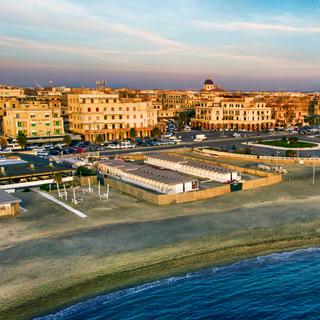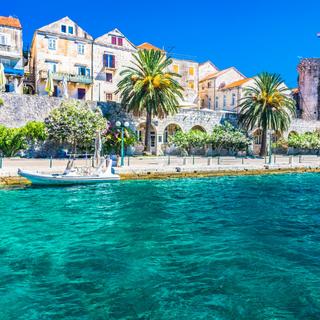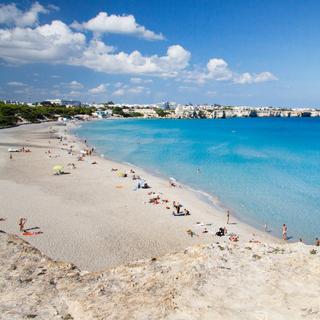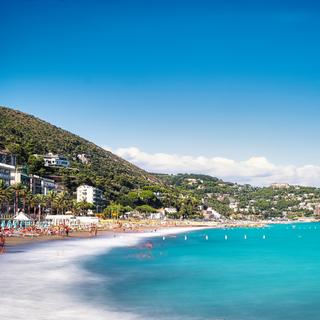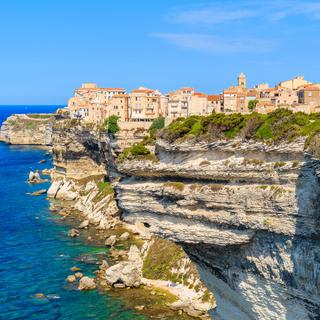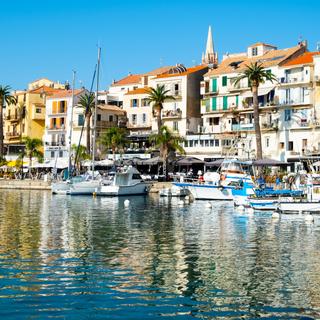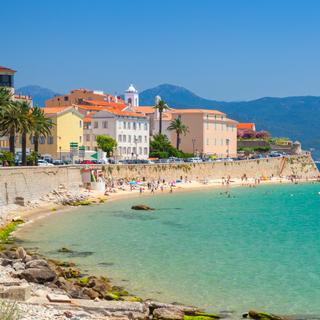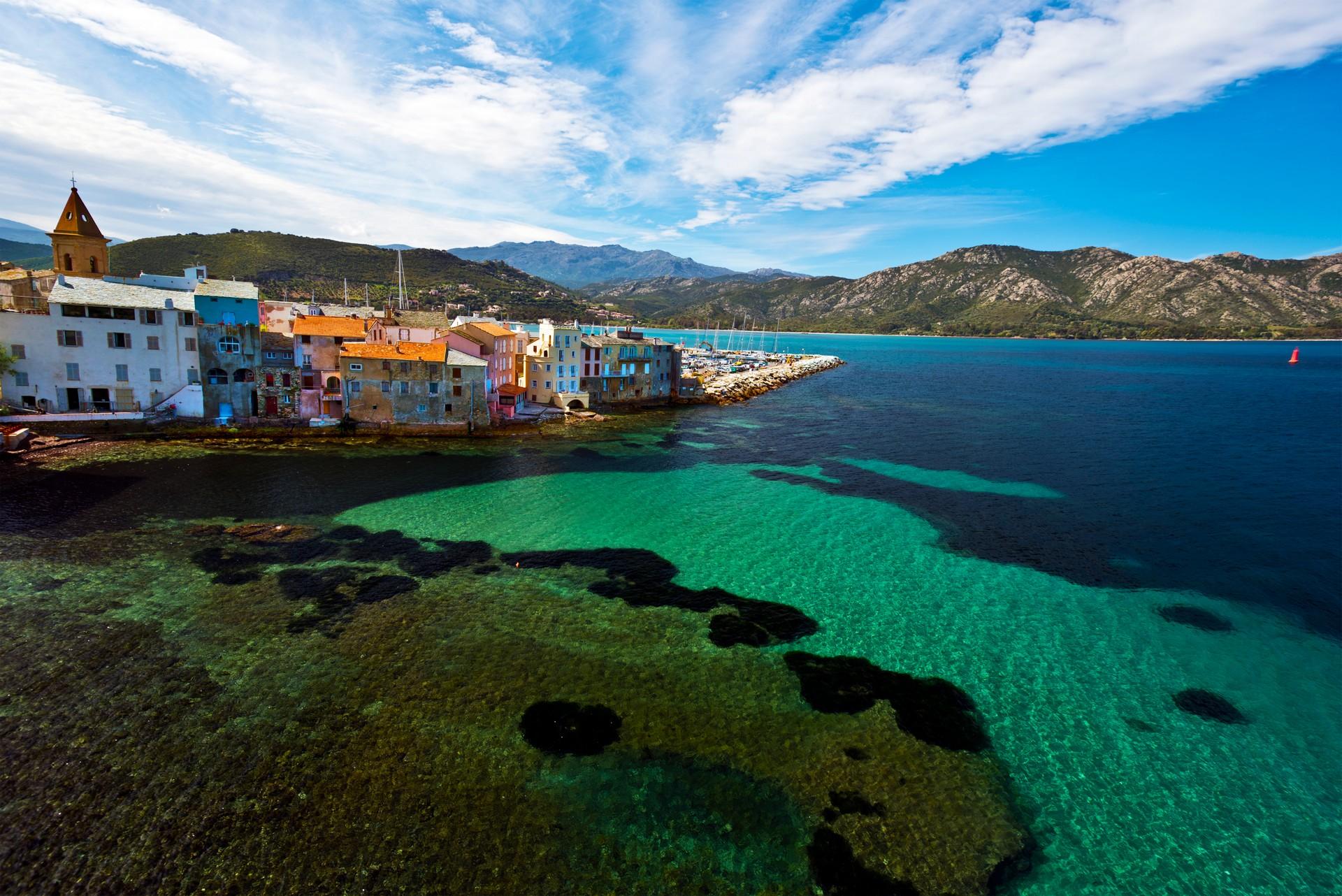
Saint-Florent weather and climate

Saint-Florent weather and climate
Day
17 °C
Night
10 °C
Sea
18 °C
Precipitation
106 mm
in month
Rainy days
11 days
in month
Daylight
10 hours
average
Sunshine
4 hours
average
Humidity
74 %
Travel information


Weather charts for Saint-Florent
We make the most from 40 years of historical weather data to predict the best weather conditions.
Deciding on where to go for a holiday is hard sometimes. Get inspired by the most popular destinations.
We aggregate data from combining multiple weather sources to ensure accuracy of the highest order.

Find more destinations like this
Activities in Saint-Florent
Flights to Saint-Florent
Destinations with similar weather to Saint-Florent
Other destinations in Corsica - France
Closest cities for Saint-Florent
Weather overview for Saint-Florent
Weather overview
Saint-Florent, located in France, typically enjoys a warm and temperate climate throughout the year. Daily temperatures can vary widely, ranging from an average low of 14 °C (56 °F) in the coldest month of January to an average high of 29 °C (85 °F) during the peak of summer in August. Sea temperatures also fluctuate seasonally, reaching their peak warmth in August at 25 °C (76 °F) and dipping to their lowest in February at 13 °C (56 °F). Rainfall is another variable factor, with July being the driest month, averaging only 2 days of rain, while November is the wettest, with around 11 days of precipitation. Nighttime temperatures take a dive as well, with the mercury dropping to a cool 5 °C (42 °F) in February and elevating to a comfortable 20 °C (67 °F) in August.
January weather
In Saint-Florent, the descent in sea temperature continues to a level of 14 °C (57 °F), while the lowest daytime temperatures of the year are felt in January. The decrease in rainy days is noticeable, standing at 8 days, paralleled by a reduction in the rainfall, which now measures 62 mm (2.43 in). The night temperature, on a downward trajectory, registers at 6 °C (42 °F).
February weather
The coldest sea temperature of the year is observed in Saint-Florent at 13 °C (56 °F), coinciding with the lowest nighttime temperatures. The progression of cloudless sunny hours starts to increase, now at 5 hours.
March weather
A noticeable upward shift begins for the daytime temperatures in Saint-Florent, reaching 16 °C (60 °F), with a similar rise in nighttime temperatures, which now stand at 8 °C (46 °F). The duration of sunshine increases in tandem with the previous month.
April weather
Daytime temperatures in Saint-Florent continue their ascent, reaching 18 °C (64 °F), while signs of an increase in sea temperature emerge. An upswing in rainfall is noted, with 67 mm (2.65 in). Nighttime warmth persists, and the consecutive rise in sunny hours is recorded at 7 hours.
May weather
Observations reveal a steady climb in the sea surface temperature to 18 °C (64 °F) in Saint-Florent, alongside an increase in daytime warmth to 22 °C (71 °F). The frequency of rainy days begins its decline, now at 6 days, and a similar trend is seen in the volume of rainfall. The peak of humidity is witnessed at 76 %, while nighttime temperatures continue their linear rise.
June weather
Rising sea temperatures continue to be a trend, with a measurement of 21 °C (70 °F) noted, and increasing warmth during the day, reaching 26 °C (79 °F), signals the advent of the tourist season. The decreasing number of rainy days stands at 4 days, and there's a corresponding decline in precipitation. Night temperatures extend their growth, arriving at 17 °C (62 °F).
July weather
The peak tourist season is marked by a steady incline in daytime temperatures, approximating 29 °C (85 °F), and sea temperatures, reaching 24 °C (75 °F). A minimum in the number of rainy days is hit at 2 days, alongside the lowest rainfall levels. The zenith of sunny hours is observable with a count of 10 hours.
August weather
The close of the peak tourist season is upon us, with the highest sea temperatures witnessed, and peak daytime warmth also noted at 29 °C (85 °F). Rainy days are on the rise, documenting 3 days, and precipitation levels also ascend. Night temperatures hit their maximum, averaging 20 °C (67 °F).
September weather
With the arrival of September, the descent in sea temperature to 23 °C (73 °F) is apparent, alongside a decrease in daytime heat. The frequency of rainy days aligns with the previous month at 6 days, with a continued upsurge in precipitation. A decrease in sunny hours parallels this, listed at 8 hours.
October weather
Daytime temperatures in Saint-Florent take a downward turn, registering 22 °C (72 °F), while the sea temperature also cool down. The climb in rainy days is noticeable, now at 8 days, with rainfall at its peak, equalling 108 mm (4.27 in). Night temperatures lessen, and daylight hours shrink too.
November weather
As the chill of November sets in, daytime heat lessens further to 17 °C (63 °F), and the sea temperatures follow a similar trend. The number of rainy days reaches its zenith at 11 days. Diminishing daylight is met with a reduction in the number of sunny hours.
December weather
The descent in daytime warmth persists into December, noted at 14 °C (58 °F) in Saint-Florent, with the sea temperature registering a similar decrease. The reduction in rainy days begins, tallied at 9 days, and a cutback in rainfall is also perceived. Nighttime temperatures decline, and the shortest days of the year are upon us.
FAQs
What is the trend for night temperatures and rainfall in Saint-Florent at the beginning of the year?
As the year begins in Saint-Florent, night temperatures tend to decrease, averaging around 6 °C (42 °F), and there is a notable reduction in the number of rainy days, with totals averaging 8 days.
How does daylight evolve in Saint-Florent during February?
Daylight in Saint-Florent during February begins to expand, offering an average of 5 hours of clear, sunlit hours.
What changes occur in temperatures and sunshine during March in Saint-Florent?
March in Saint-Florent sees daytime temperatures beginning to climb to 16 °C (60 °F), and nighttime temperatures also rise to 8 °C (46 °F), with an increment in sunny hours reflective of the season's change.
What are the characteristics of April's weather in Saint-Florent regarding temperature and rainfall?
April's weather in Saint-Florent is defined by a continual rise in daytime temperatures to 18 °C (64 °F) and a subtle increase in rainfall to 67 mm (2.65 in).
How does the shift towards warmer weather in May affect sea and daytime temperatures in Saint-Florent?
With the shift towards warmer weather in May, both sea and daytime temperatures in Saint-Florent experience an upturn, with measures at 18 °C (64 °F) and 22 °C (71 °F) respectively.
As the tourist season begins, what are the expected sea and daytime temperatures in Saint-Florent during June?
With the onset of the tourist season in June, visitors to Saint-Florent can anticipate sea temperatures of 21 °C (70 °F) and daytime highs around 26 °C (79 °F).
During the peak tourist season in July, what is the prevalence of sun and rain in Saint-Florent?
July's peak tourist season in Saint-Florent is characterized by an abundance of sunshine, averaging 10 hours, and a scarcity of rainy days, with only 2 days.
In the culmination of summer, what are the conditions like in Saint-Florent during August?
As summer reaches its height, Saint-Florent's conditions are warm and welcoming, with sea temperatures peaking and nighttime temperatures averaging a pleasing 20 °C (67 °F).
As autumn approaches, how do temperatures and rainfall adjust in September for Saint-Florent?
With the approach of autumn, Saint-Florent sees a gradual reduction in temperatures and an increase in rainfall, preparing for the seasonal transition.
What weather patterns are typical of October in Saint-Florent?
October in Saint-Florent typically brings a drop in both air and sea temperatures, peaking rainfall, and a decrease in daytime length.
How does the onset of winter affect the climate in Saint-Florent during November?
The onset of winter in Saint-Florent during November is marked by a continued drop in temperatures and the year's highest frequency of rainy days.
As the year winds down, what changes occur in Saint-Florent's climate in December?
As December arrives, Saint-Florent experiences a continued reduction in both air and sea temperatures, alongside shorter days and less rainfall.
